Vegetable, Fruits, Herbs: B’luru Woman Shares How She Grows 80+ Plants at Home
" 'Green thumb' is the biggest myth," says Anu Ganapathy, explaining that anyone can grow their own terrace garden with the right potting mix, seeds and tips. #UrbanGarden
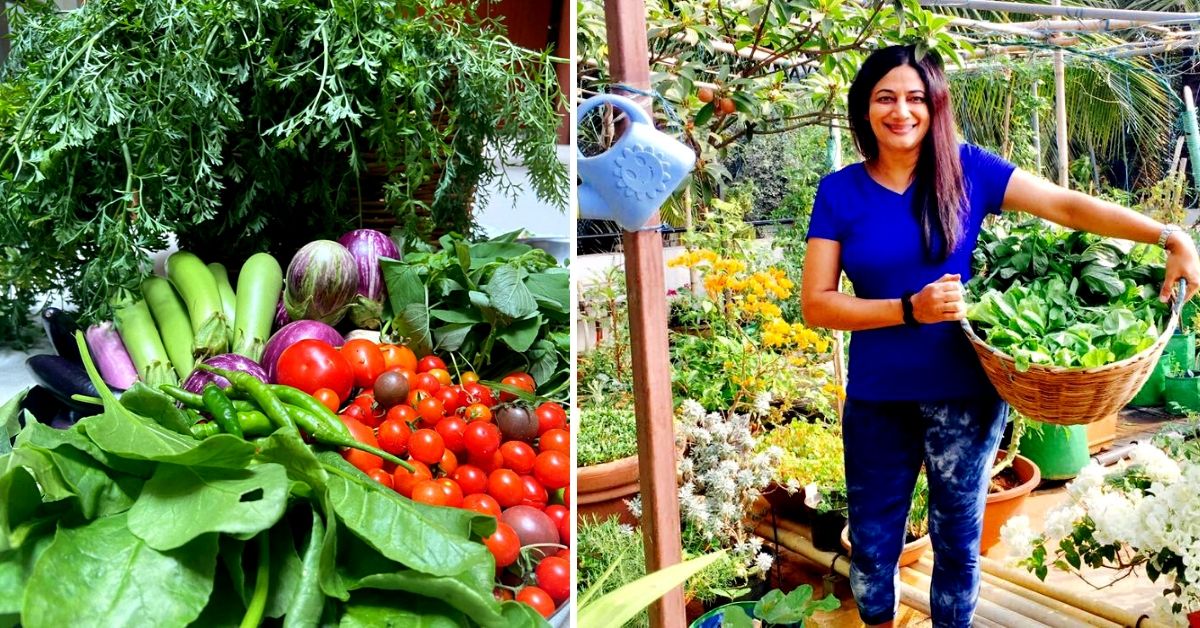
With The Positive Collective, The Better India’s COVID-19 coverage is available to regional language publications for free. Write to [email protected] for more details.
“I truly believe that gardening is a metaphor for life. You plant a seed and you see it grow in front of your eyes. Just touching and working with soil can be so therapeutic and calming. Once you start doing it, you appreciate it so much that there is no looking back,” says Bengaluru-based urban gardener Anu Ganapathy. The passionate gardener believes that anyone can garden with the right potting mix, seeds, and tips, of course. The homemaker started gardening about five years back, and now, she has over 80+ vegetables, greens, fruits, herbs, and medicinal plants in her 2000 sq. feet terrace garden!
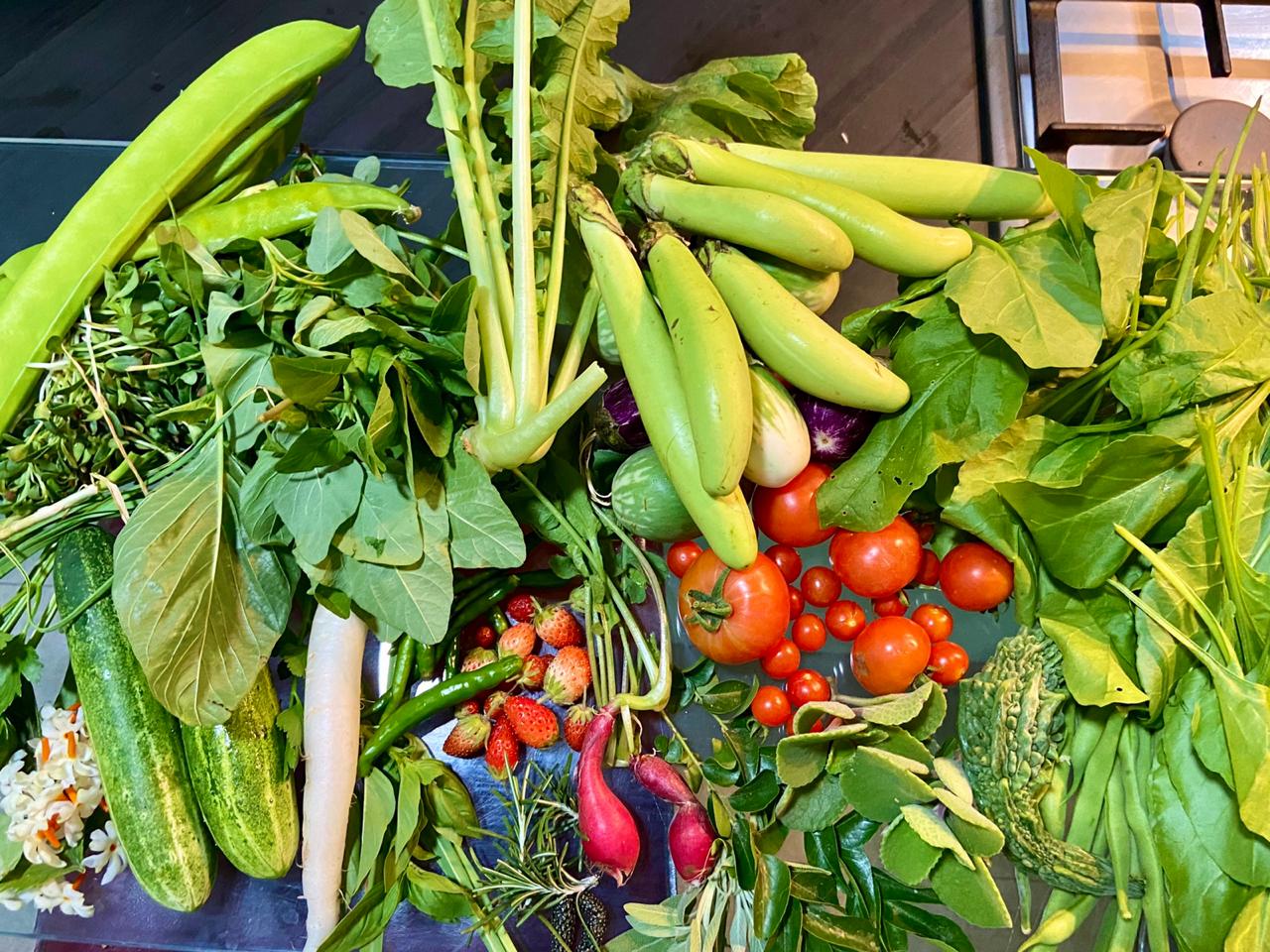
In 2015, years of employing her skills at creating a beautiful green space for herself culminated into – ‘It’s Thyme to Garden’, Anu’s startup where she organises workshops and trains people to ace the skills of gardening. Since then, she has disseminated her knowledge to at least 1000+ people from her friend circle, retirement homes, organic stores, and even in schools through her insightful workshops!
Lucky for us, she shares some of the best hacks with The Better India (TBI).
Tips & Tricks For a Flourishing Terrace Garden
If you ask Anu the names of the plants she’s grown in her terrace; you will need to have some time for her list is impressive! “Brinjal, spinach, and tomatoes are something that I haven’t bought from the market in over four years,” shares Anu.
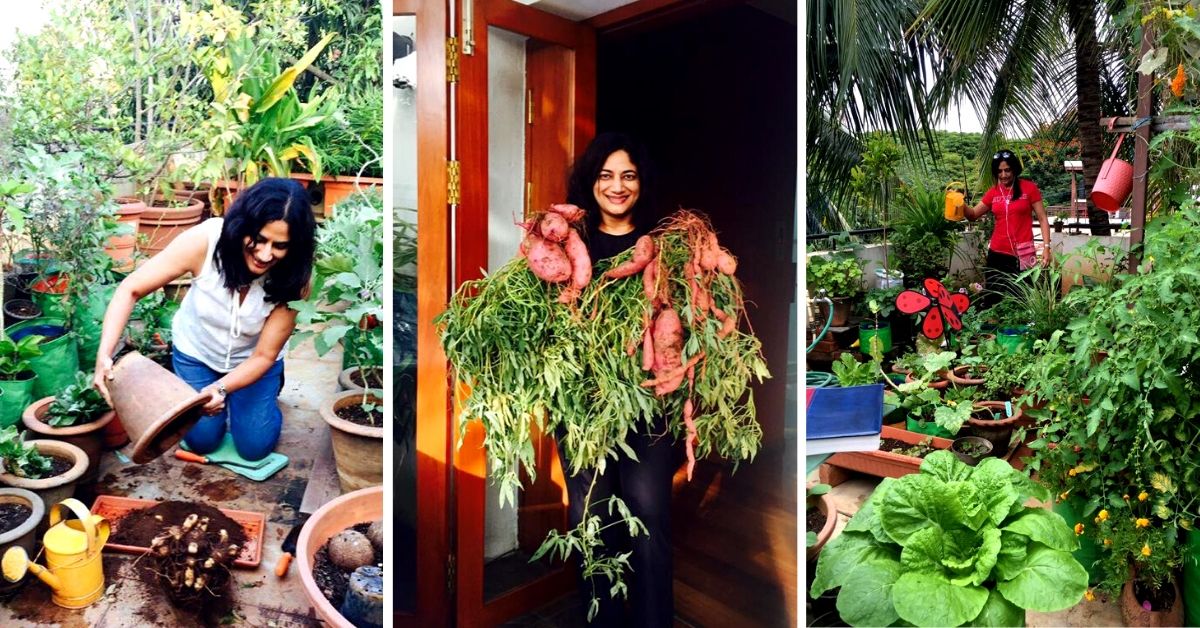
In addition to these, she has been growing vegetables like cauliflower, ash gourd, bitter gourd, radishes, beans, fenugreek, celery, and onions among others. She also has several fruit plants and has successfully harvested sapodilla, guavas, cucumbers, figs, custard apple, dragon fruits, pomegranate, papaya, barbados cherry, strawberries, avocado, orange, and lemon, among others.
“Having a garden at home has truly spoilt us. Once you start growing your food organically, have tasted it’s distinct freshness, there is no going back,” smiles Anu. While we discuss the tips and tricks she can share with us, she looks back on the mistakes she has made herself so that we can avoid them in our gardens.
Anu says that when a person decides to start gardening, the most crucial factor is to understand the objective.
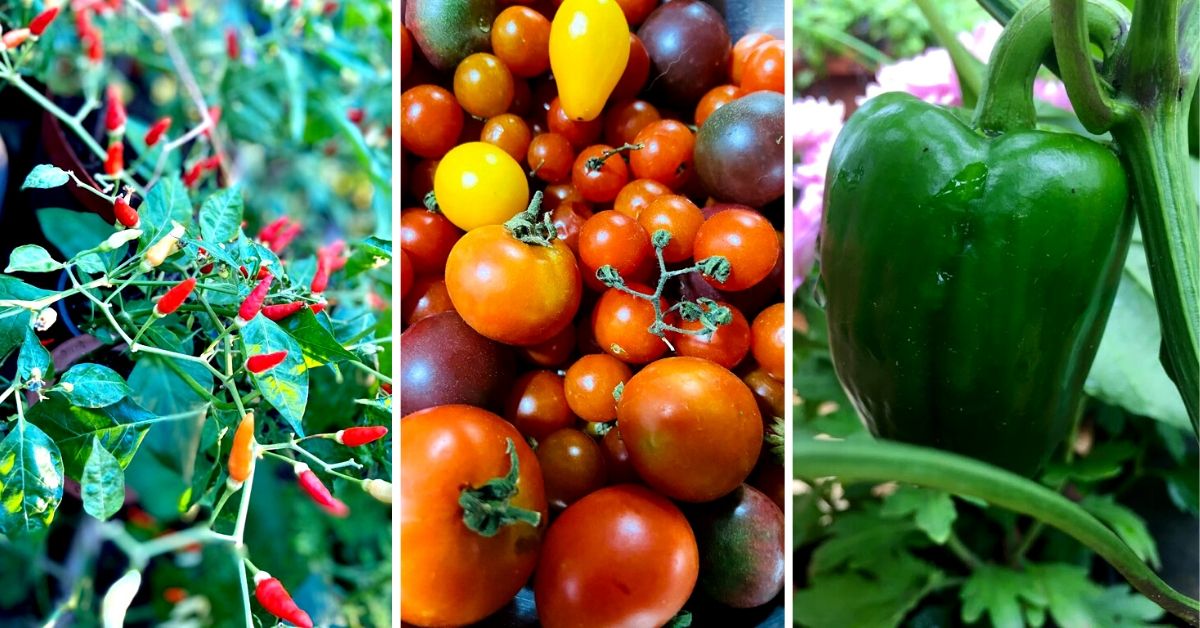
“Initially, I would try to grow these fancy vegetables like artichokes and asparagus, which take a lot of effort. Soon, I realised that I was unnecessarily spending too much of my time when my whole objective was to buy less from outside and grow food for daily meals,” she says.
She informs that some of the easiest edible plants to grow include spinach, beans, celery, fenugreek, ginger, turmeric, and onions.
Here, she explains how to go about growing a few of these.
- Fenugreek: Easily available in your kitchen cabinet, the seeds can be sown in a small pot. These nutritious leaves can be harvested anywhere between three to four weeks.
- Shallots (Sambar onions): Place a few of these onions in a pot. Take a few handfuls of soil and spread it over. A few weeks later, you’ll see green shoots which you can quickly chop up and use while you cook Chinese dishes.
- Tomato: Take a slice of tomato and place it in a pot. Collect a handful of soil and sprinkle it on top.
- Garlic: Take cloves of garlic and push them into the soil. You’ll see the shoots appear and you can use this in your salads as they add a nice pinch. If you want to harvest the whole garlic, wait for the stalks to dry up, and then it is ready to be pulled out of the ground.

Cauliflower, turmeric and corn from the garden - Radish leaves: Anu says that these leaves are high in nutrients and can be grown quickly. Chop off the head of the radish and allow it to rest in a saucer of water. The leaves will start sprouting.
- Peanuts: Push peanuts in soil, and within three to four months, stems with tiny leaves will start appearing. Pull it out of the ground, and you’ll see loads of peanuts growing with the shell.
- Turmeric/Ginger: These grow under the soil and can be buried about two inches under the ground and kept in a sunny spot. Once the leaves dry up, they are ready to be harvested.
Anu is particularly encouraging about growing turmeric as it has several health benefits. She also shares a few tips about how to harvest and store these goodies so that the body can easily absorb curcumin, the anti-inflammatory compound found in turmeric.

“So, once you have harvested your turmeric, boil it in water so that the curcumin gets activated. Chop it in small pieces and dry it in the shade so that it does not lose its colour. Do not powder the whole thing and powder only as much as you need for say a period of three months. Store the rest of it in an airtight container so that it stays fresh. Add the turmeric in your dishes along with black pepper and oil, as these two ingredients help your body in absorbing turmeric’s antioxidant properties.,” she says.
Do you have to fight with pest attacks on a regular basis? Anu also shares a few steps on how to manage pests for a thriving organic garden effectively.
- A good compost does half your job when it comes to healthy plants. Compost comprises nitrogen and carbon, which acts as rich food for microbes in the soil. If your compost is too runny, you can add coco peat and dry leaves to get the right consistency.
- Woolly aphids are one of the most common pests that attack plants. To prevent any kind of pest attack, take 5ml of neem oil, half a teaspoon of reetha (soapberries) powder, and mix it with one litre of water. Don’t forget to check under the leaves and spray every ten days.
- Keep dry cow dung at home and soak it in water for about three hours and pour the mixture around your plants. It’s rich in nutrients and keeps pests at bay.
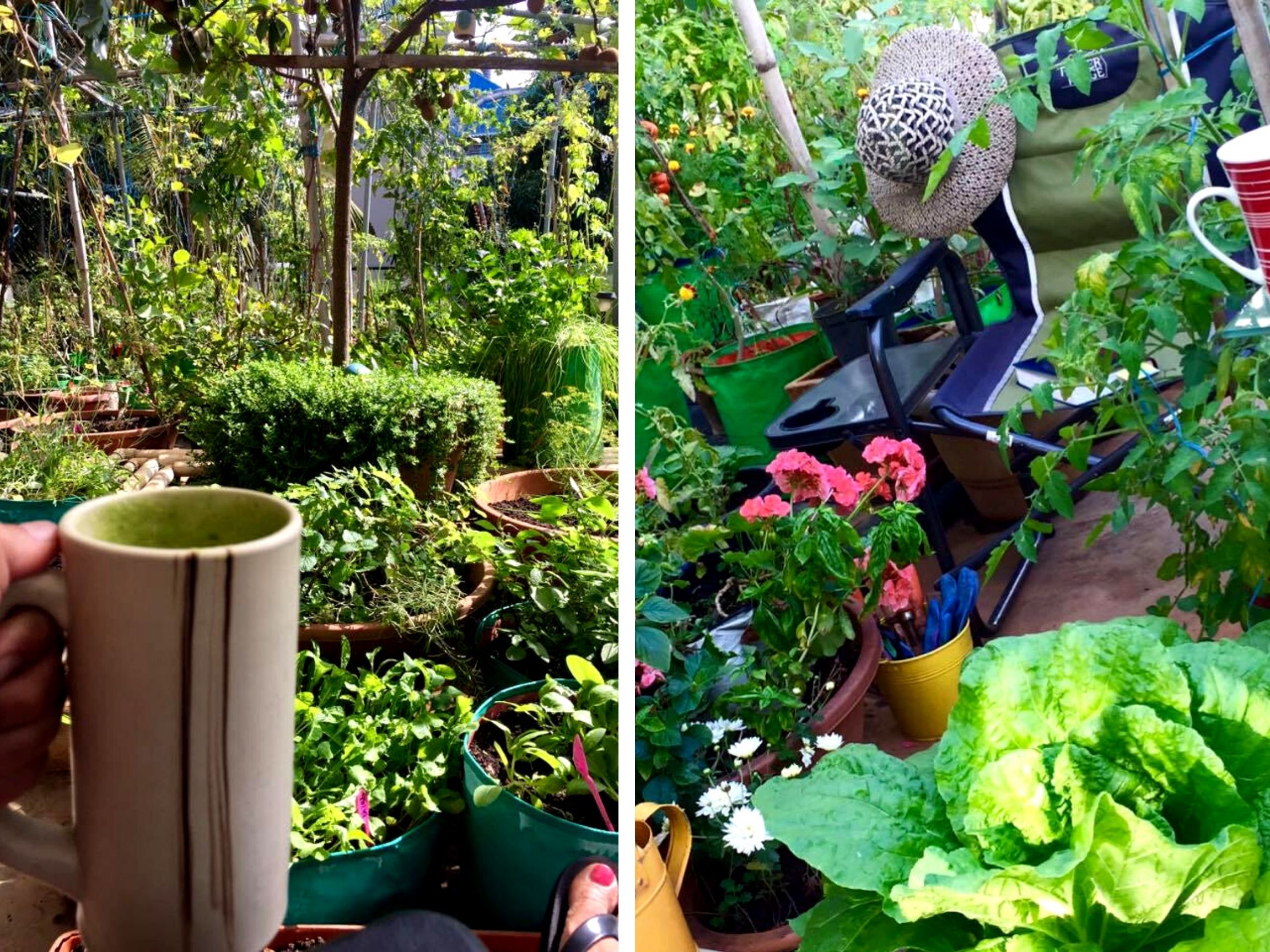
Things to keep in mind while gardening:
- If you don’t have pots at home, you can reuse take out containers or old shoe boxes. But, ensure that these have small drainage holes at the bottom so that the plant doesn’t rot in stagnant water.
- Choose the pot and container depending on the root systems of the plant. Online research is essential here. E.g., tomatoes may have tiny seeds but a very adventurous root system so that one may need a deeper pot.
- The depth for planting the seeds should be twice the size of the seed. The bigger the seed, the deeper it should be buried.
- Conduct research on companion plants that help a particular crop grow better when kept in the vicinity. For, e.g. grow tomatoes next to a pot of marigold flower, or garlic with beans. Similarly, look up what you shouldn’t keep next to a crop. Like, corn and celery shouldn’t be grown next to each other as one hinders the other’s growth.
- Collect dry leaves and place them around your plants. This prevents the soil from drying up in summers.
- Water your plants every day (unless it has rained) and ensure they get good sunlight.
- In case of a pest attack, isolate your plant from the rest. Take a wet cloth and dip it in the neem pest control mix and clean the leaves and stem thoroughly.
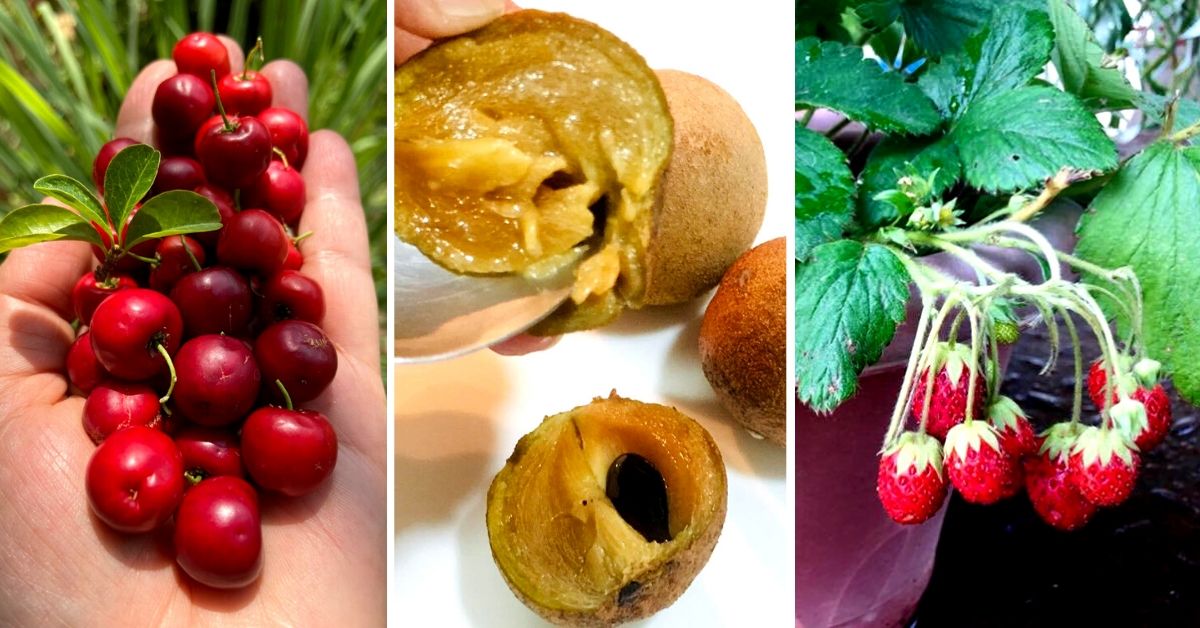
“Most importantly, keep a smile on your face while gardening and do not get too serious. It is not supposed to be stressful and should make you happy,” smiles Anu.
Introduce Your Kids to Gardening!
Looking back, Anu says that her introduction to gardening was actually at a very young age. “I used to live in a joint family until I was eight years old. There were several plants and trees in my grandma’s house. I remember I would eagerly wait for my uncle to return from work so that we could water the plants together,” recalls Anu nostalgically.
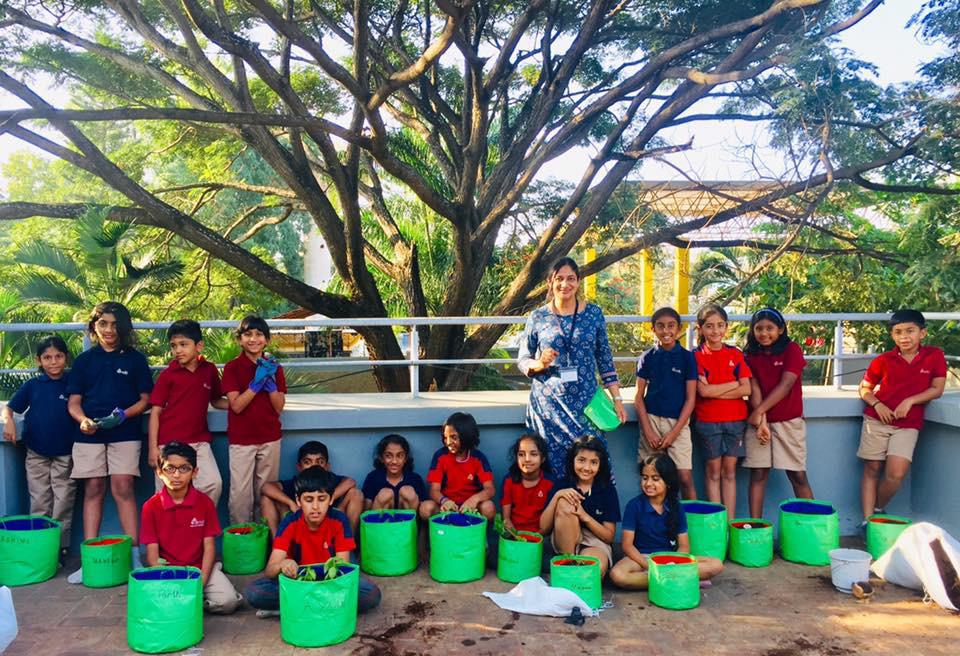
Gardening is a great activity that children can engage in, and it doesn’t have to be boring. Having conducted workshops for kids and also after engaging her own two kids in this activity, Anu knows ways to make it interesting for them.
“Making seed balls out of the mud is a great activity and pretty useful too. I remember my daughter and her friends would thoroughly enjoy it. You can later give these seed balls to your neighbours. I keep them outside my gate and inform the people in my neighbourhood so that they can collect it and start gardening,” says Anu.
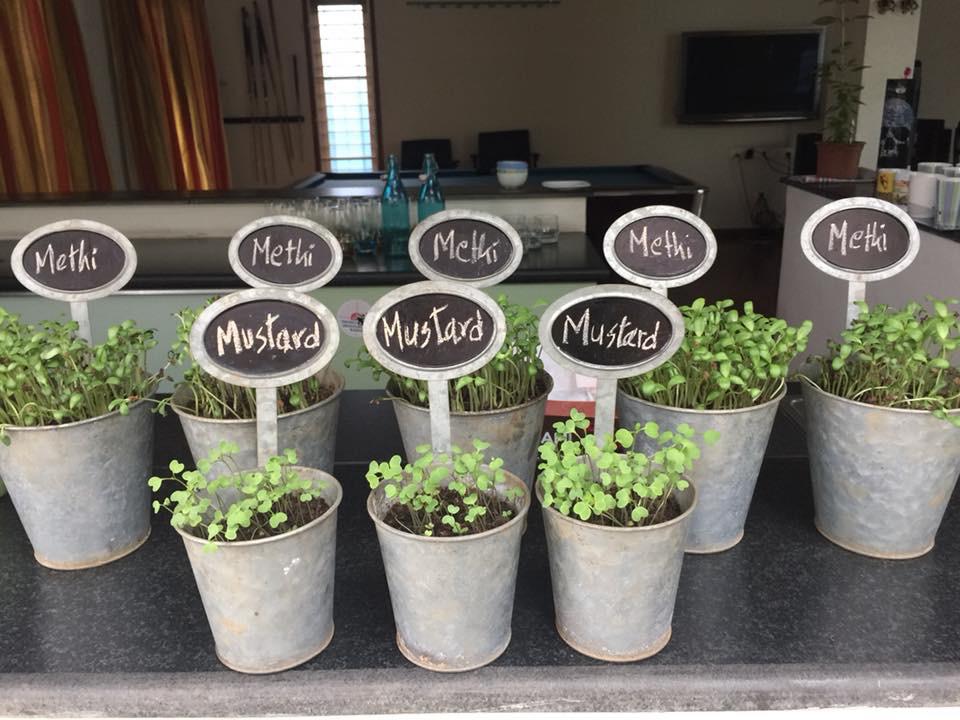
“Introducing these novel ways of growing food keeps children interested and intrigued. Also, by engaging them in gardening and urging them to make simple salads with the product they have planted and harvested makes them appreciate food more and waste less,” she says.
Stepping into a Green World
The homemaker worked in the corporate sector for over 14 years in the US and Bengaluru! About five years back, when Anu started noticing the garbage problem in Bengaluru, she decided to manage her waste. “The first step for me was to start composting. But, this was not an easy task for me. I actually struggled a lot with the smell and initially, maggots would make an appearance. But I kept trying and in four months’ time, I got the first successful batch. I cannot tell you how amazing it looked and smelled. For me, it was like black gold,” she recalls.
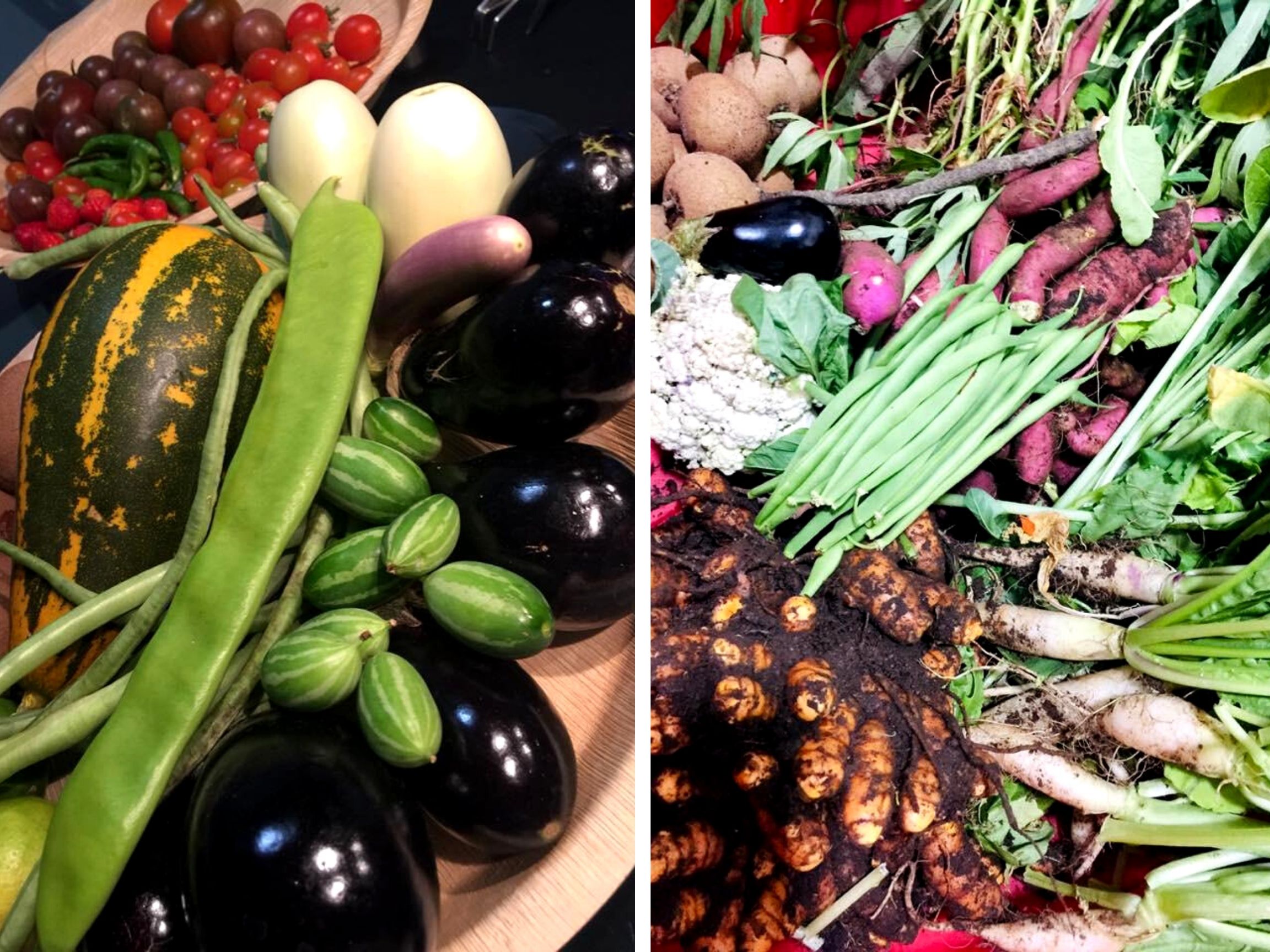
With all this compost ready to be used, the next step for her was to start setting up her garden. Also, the news of genetically modified crops and their health hazards was something that pushed her further into pursuing gardening.
But here again, she faced another challenge.
“I would plant these seeds in the soil, and with a lot of hope, I would go and check on them every morning. To my dismay, there was no sign of life. That is when I decided to take a gardening workshop. Although I enjoyed the class, upon my return, I felt like gardening was too complicated.”
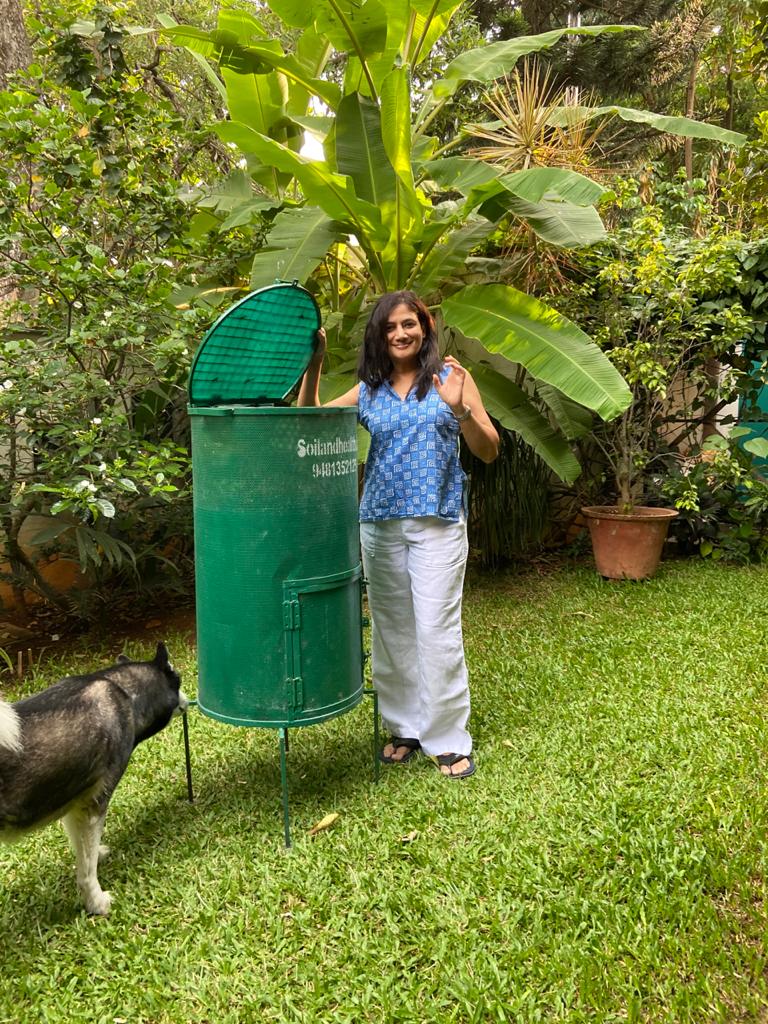
Propelled by her husband’s encouragement, the determined lady did not give up and looking back, she’s glad that she was patient.
“Throughout my life, I have seen that people who practice gardening tend to be gentle, kind, and in tune with nature. More than just growing something, it is the whole process that is truly rewarding. I truly believe that gardening can make you a calmer, happier, and wonderful soul,” she says.

Gardening at home not only helps you bring nature home but is an excellent hobby that you can pick up during this lockdown. Studies show that gardening is great for your mental health, and in several people, it reduces anxiety and depression.
So, what’s stopping you? Is it because you think you need to have a ‘green thumb’ to achieve success in your gardening endeavours? I hope Anu was able to dispel that myth for you!
(Edited by Saiqua Sultan)
Like this story? Or have something to share?
Write to us: [email protected]
Connect with us on Facebook and Twitter.

Similar Story

Bengaluru’s Rain Nightmare: ‘Zenrainman’ Shares 6 Ways to Stop Floods from Repeating
S Vishwanath, a civil engineer and urban-regional planner with over three decades of experience in the water and sanitation sector explains what Bengaluru must do to prevent flooding and water-logging.
Read more >
If you found our stories insightful, informative, or even just enjoyable, we invite you to consider making a voluntary payment to support the work we do at The Better India. Your contribution helps us continue producing quality content that educates, inspires, and drives positive change.
Choose one of the payment options below for your contribution-
By paying for the stories you value, you directly contribute to sustaining our efforts focused on making a difference in the world. Together, let's ensure that impactful stories continue to be told and shared, enriching lives and communities alike.
Thank you for your support. Here are some frequently asked questions you might find helpful to know why you are contributing?


This story made me
-
97
-
121
-
89
-
167












